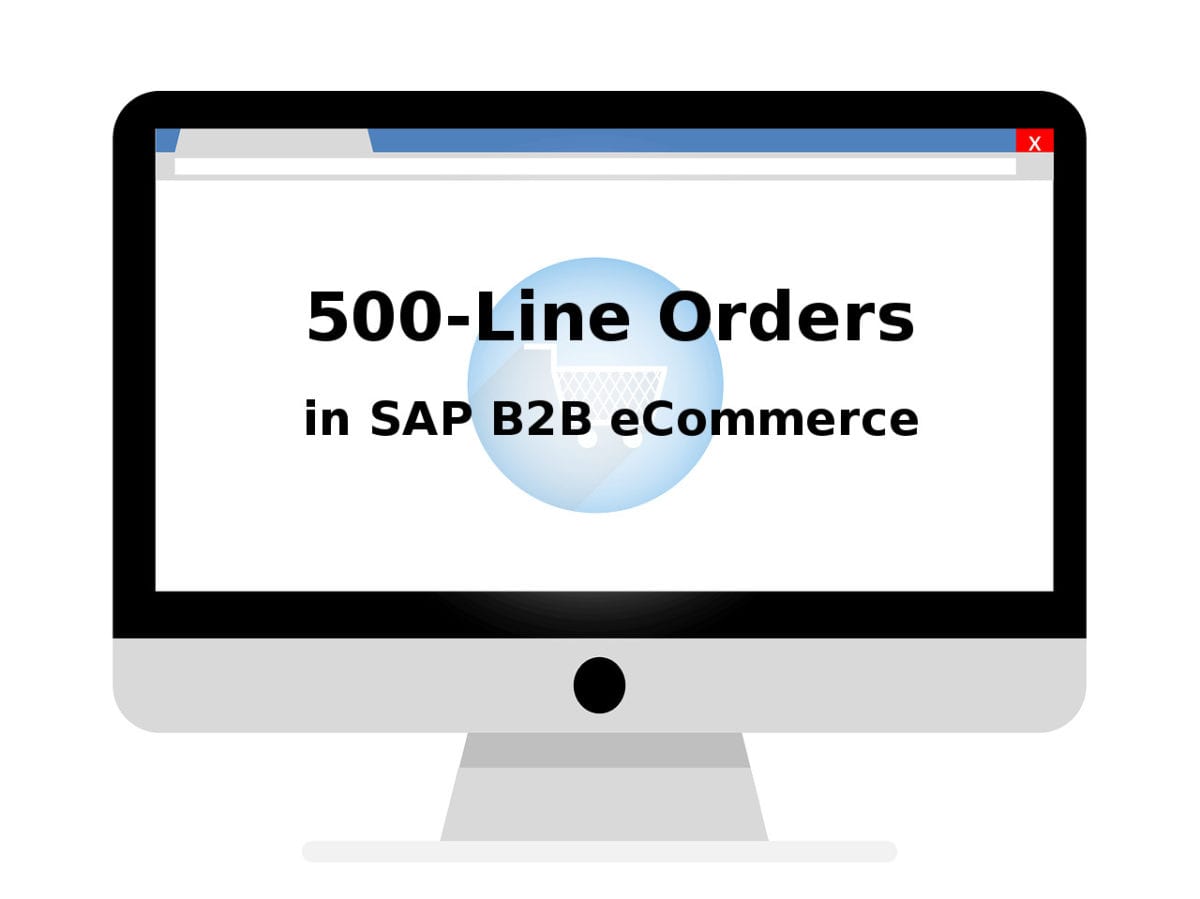Massive Orders Posting 76% Faster? That’s Right!
Speeding up 500+ line orders A few months ago, we began work on a solution to reduce RFC response time between Corevist Commerce and SAP. One of our clients routinely ...
500-Line Orders Without EDI? You Bet!
Handling Huge Orders in SAP eCommerce In the world of SAP B2B e-commerce, we don’t often see gigantic orders. We see ten line items, thirty, maybe even fifty--these are all ...
500-Line Orders Without EDI? You Bet!
In the world of SAP B2B e-commerce, we don’t often see gigantic orders. We see ten line items, thirty, maybe even fifty--these are all typical. Our app handles them day-in, ...
Using Quotes in SAP eCommerce to Simplify Your Business
Quotes in SAP eCommerce In many B2B markets, quotes form the backbone of the sales process. They allow B2B companies to negotiate pricing with their customers and store that information ...
Using Quotes in SAP eCommerce to Simplify Your Business
Quotes in SAP eCommerce In many B2B markets, quotes form the backbone of the sales process. They allow B2B companies to negotiate pricing with their customers and store that information ...
Corevist’s Belt and Suspenders Approach to Duplicate Order Prevention
In SAP B2B eCommerce, user experience (UX) is tantamount. From first login, through catalog search, adding items to the cart, all the way to checkout, the user needs a friction-free ...
Improved Alerts in Corevist’s Q2 2017 Release
Improved Alerts in the Corevist App “Our clients should never ask us for status on a task/deliverable that we own.” --From the Core of Corevist Being proactive is an expected ...
SAP Batch Management: Optimizing for e-Commerce
UPDATE 9/18/19: SAP Inventory Management - The Ultimate Guide for a popular deep dive into topics related to SAP batch management. SAP Batch Management Best Practices In the world of B2B ...
How well do you know your B2B customers?
We’d like to politely suggest that you may not know your customers as well as you think you do. But, don’t worry, we’re always looking for ways to help you get to know them better. What do B2B customers want? It depends on who you ask. After years of working with mid-market industrial manufacturers, we’ve found that B2B eCommerce projects typically fall into two categories. Those categories are defined by which department is driving the project.
How to use SAP to restrict what your customers see on your B2B eCommerce site
We hear it at every project initiation workshop. “You mean every customer will be able to see our ENTIRE material catalog??? We can’t let customer X know that we sell product Y to customer Z, that would create an awkward and difficult situation....” Almost every SAP customer has some materials they don’t want certain customers to know about. Take branded products for example. (“Why do you make an ACME labeled version but you won’t make one for my company?”) Or, maybe you keep in limited supply for just a handful of customers. Whatever the case, your company probably has materials in SAP you would prefer to keep hidden from some of your customers.
Why didn’t you tell me I needed this part?!?!?
This is a direct quote from one of our clients: “If our B2B customers order porcelain tile online, and we don’t tell them that they need a specific tool or glue to install that product, they are going to be so mad at us.” According to Forrester Research, product recommendations (or cross selling) are responsible for an average of 10-30% of eCommerce site revenues. But on B2B websites, cross selling (or the lack of it) can drive so much more than revenue. It can help ensure customer satisfaction.
Real-time shipping in a B2B world
Anyone who has shopped online (which these days is almost everyone) has certain expectations about how shipping is calculated. Namely, that it’s calculated immediately, so you know exactly how much shipping will cost when you click that “place order” button. Unfortunately, as with many other aspects of eCommerce, shipping is a lot more complicated with B2B orders...








